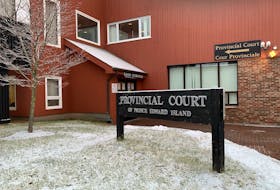A quiet milestone was recently reached in Nova Scotia’s journey to reach the one million population club among the provinces.
And it is good news.
Nova Scotia has 971,395 residents who now call our province home. Statistics Canada has released estimates of the population by county in Nova Scotia as of July 1, 2019.
The best surprise about this news is that the Cape Breton Regional Municipality is moving in the right direction again when it comes to population growth.
In Nova Scotia, nine of the 18 counties had population growth from July 1, 2018 to June 30, 2019. Halifax had the fastest growth at 2.26 per cent, followed by Cape Breton County at 1.58 per cent and Annapolis at 0.97 per cent.
There was also population growth in Yarmouth, Lunenburg, Kings, Hants, Colchester and Antigonish counties. Population decline was fastest in Guysborough County (-1.46 per cent), followed by Shelburne, Queens, Victoria, Cumberland, Digby, Inverness, Pictou and Richmond.
Halifax's population has risen to 440,332 or 45.3 per cent of the provincial population. Cape Breton County's population was 101,264 as of July 1, 2019 and had 10.4 per cent of provincial population. The other three counties on Cape Breton Island, Inverness (17,382), Richmond (9,095) and Victoria (7,109) accounted for 3.5 per cent of the provincial population.
Nova Scotia's population growth has accelerated in the last four years. Much of this growth has been attributable to ongoing increases in the population of Halifax, Kings and Hants counties. Population has recently rebounded in Yarmouth, Annapolis, Lunenburg, Colchester, Antigonish and Cape Breton counties. The pace of population decline has slowed in Shelburne, Digby, Cumberland, Pictou, Inverness, Richmond and Victoria counties.
Population estimates for counties change from one year to the next based on natural change (births, deaths), international migration (immigration, emigration, non-permanent residents), interprovincial migration (from one province to another) and intra-provincial migration (from one county of the province to another).
All counties except Halifax reported more deaths than births between July 1, 2018 and June 30, 2019. Halifax had 754 more births than deaths during this period. The natural population decline was largest in Cape Breton County with 574 more deaths than births and smallest in Hants County with 38 more deaths than births.
Immigration has contributed to the recent acceleration of Nova Scotia's population growth. Immigration was concentrated in Halifax with 5,361 immigrants added to the population. The next highest numbers of immigrants added were in Cape Breton County with 216 and Kings County with 160.
Net changes in the number of non-permanent residents were concentrated in Cape Breton County (+2,249) rather than in Halifax (+1,481) and this can be mainly attributed to the continuing success being realized with foreign student enrolment at Cape Breton University.
Interprovincial migration was concentrated in Halifax with a net gain of 1,590 persons from other provinces. All counties in Nova Scotia except CBRM reported positive interprovincial migration in the last year. CBRM is the only county on Cape Breton Island to struggle to attract newcomers from other parts of Canada to relocate to the municipality with a net loss of 90 residents to other provinces. Victoria County had a net gain of 57, Richmond had 26 and Inverness 11 from July 1, 2018 to June 30, 2019.
Net movements within Nova Scotia have contributed to population increases in Halifax, Colchester, Hants and Annapolis counties. All other counties had net negative migration with the rest of the province. CBRM lost 254 people, Inverness lost 61, Victoria 45 and Richmond 22. All of these losses were to other counties within Nova Scotia.
The population of children aged 0 to 14 years increased by 0.9 per cent for the province as a whole. The share of population under the age of 14 is highest in Hants, Antigonish, Colchester and Halifax counties.
Nova Scotia's overall population aged 15 to 39 is rising (+2.2 per cent). The counties with the highest share of the population aged between 15 and 39 were Halifax, Kings, Antigonish and Cape Breton counties. The population aged 40 to 64 is declining in every county except Halifax.
Population over the age of 65 is rising in every county (+3.4 per cent for the province as a whole) as the baby boom continues to reach this age threshold. The fastest growing populations aged 65 and over are in Halifax, Antigonish, Kings and Hants counties. The highest share of populations over 65 are found in Guysborough, Richmond and Queens counties. The lowest shares of residents over age 65 are in Halifax and Hants counties.
Between July 1, 2018 and July 1, 2019 Nova Scotia's median age declined for the first time since the 1960s, falling to 44.9 years. That is encouraging. Declining median age was observed only in Halifax and Cape Breton counties, while median age rose in all other counties. Halifax has the lowest median age at 39.8 years while the highest median age was observed in Guysborough County at 57.5 years. Median age for CBRM sits at 48, Inverness 51, and Richmond and Victoria at 53.
Nova Scotia’s population growth is not perfect but it is great progress. More people bring more tax revenue and that is how the province will finance its upcoming record setting $1-billion capital budget spending plan. Things are looking up.
Adrian White is the CEO of NNF Inc., Business Consultants. He resides in Sydney and Baddeck. He can be reached at [email protected].









